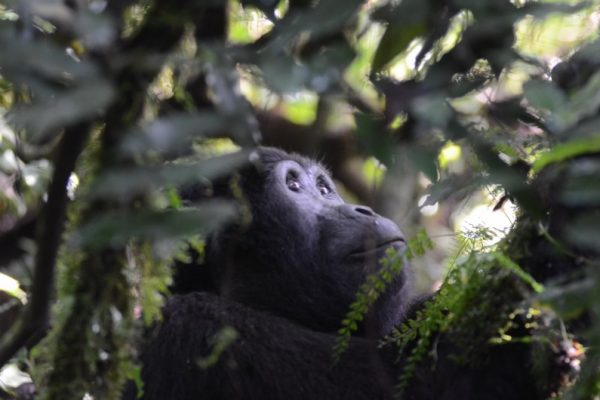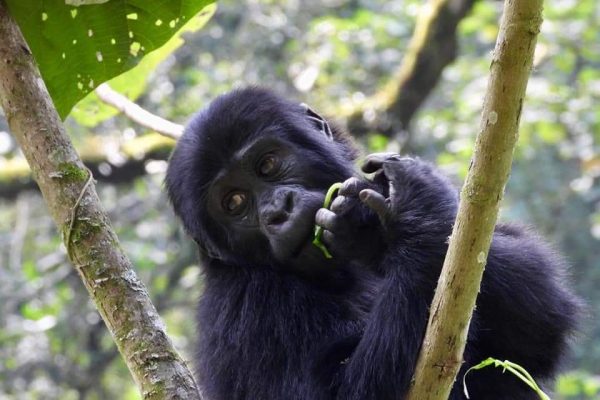Mountain Gorillas: Facts, Lifespan, Diet, Habitat: Everything to Know
This page explains mountain gorillas facts. here are the 10 Top facts about mountain gorillas: Population, Diet, Habitat, Lifespan, scientific name & gorilla endangered status.
What is a mountain gorilla
This big ape is one of two subspecies of the eastern gorilla and ranks among the largest extant primates globally. These apes possess robust limbs, a substantial chest, and wide hands and feet — additionally, they have longer hair and shorter arms compared to their lowland relatives. Their dense black hair provides insulation against chilly temperatures.
Top facts about mountain gorillas: Explained in Video
Facts on Mountain Gorillas, scientific name Gorilla beringei beringei is a sub species of the Eastern Gorilla from phylum Chordata. Discover 10 Facts about Mountain Gorillas, Mountain Gorilla population, diet, habitat, lifespan, importance, and many more;
- Common Name: Mountain Gorilla
- Scientific Name: Gorilla beringei beringei
- Average Life Span: 35 years
- Weight: 300-485 pounds
- Standing Height: 4 to 6 feet
About the Mountain Gorilla
Mountain Gorillas are endangered according to the IUCN Red List.
Humans share about 95- 99% of DNA with the gorillas depending on what is included. They are the next closest living relatives to human beings after chimpanzees and bonobos.
They are one of the largest living primates weighing about 150 Kilograms.
They live in family groups with several individuals. A group of Gorillas is called a band or troop each led by a dominant Silverback who is the adult male in the group.
Gorillas communicate by different calls. These include short barks when they are curious, roars, or hoots to intimidate rivals and struts.
Gorillas are social, and not dangerous to humans.
Mountain Gorillas Facts
How many Mountain Gorillas are left in the world?
A specie once on the brink of extinction is now steadily increasing in numbers. The latest concluded census of the Mountain Gorilla population brings the total to 1063 individuals.
The Total Population of Mountain Gorillas as of 2019 is estimated to have increased to 1063 individuals following the 2018 census in the Bwindi Impenetrable National Park and Sarambwe nature reserve ecosystem.
This is the largest population of mountain gorillas that have ever been recorded in these two habitats of the endangered great apes.
How do Mountain Gorillas look like
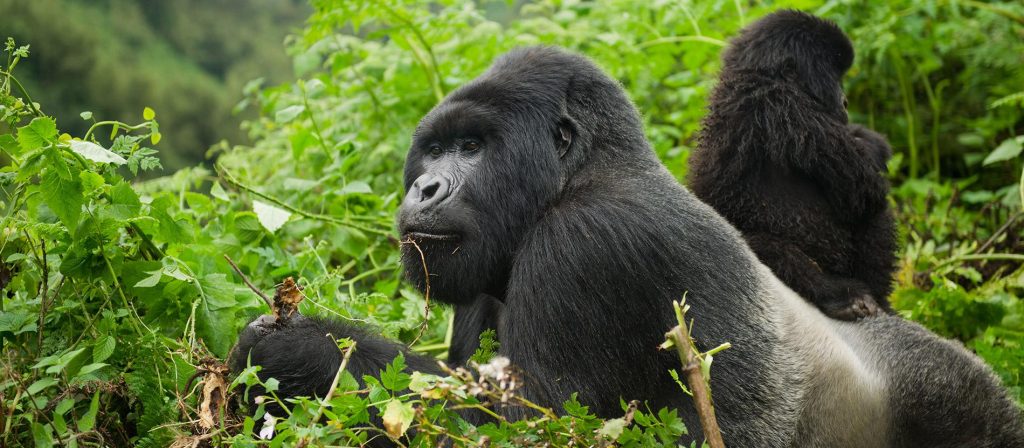
how a silverback mountain gorilla looks like!
Mountain Gorillas are more darkly colored (the darkest of all) than western gorillas.
With its dark color, the Mountain Gorilla also has the thickest hair with a longer face and broader chest.
Looking closely into the eye of a Mountain Gorilla, their eyes are dark brown in color with the iris framed by a black ring.
Gorillas move by what is known as Knuckle walking and rarely move bipedal (upright) for short distances, especially during defensive situations.
Some Mountain Gorillas are also known to use knuckle walking as well as use other parts of their hands, especially the back.
Male wild adult Gorillas can weigh about 136 – 195 Kg whereas adult female Gorillas weigh about half of the adults with about 68-113 Kg. With height, adult males are about 1.4 -1.8 m tall, and females are a little shorter at 1.25 – 1.5 m tall.
How long do Mountain Gorillas Live; – Mountain Gorilla Life Span
The estimated Mountain Gorilla lifespan in the wild is 35-40 years. The Mountain Gorilla’s lifespan is 35 to 40 years in the wild or natural habitats. They only live in their natural habitat and have failed to adapt to survive in captivity or in zoos because of how much they feed.
Both the female and silverback Gorillas live for up to 35 years and more in the wild. Mountain Gorillas do not live well in captivity due to several unclear reasons but most probably thought to be because of the complex diet that they can have well in the forests.
Where do Mountain Gorillas live; – Habitat
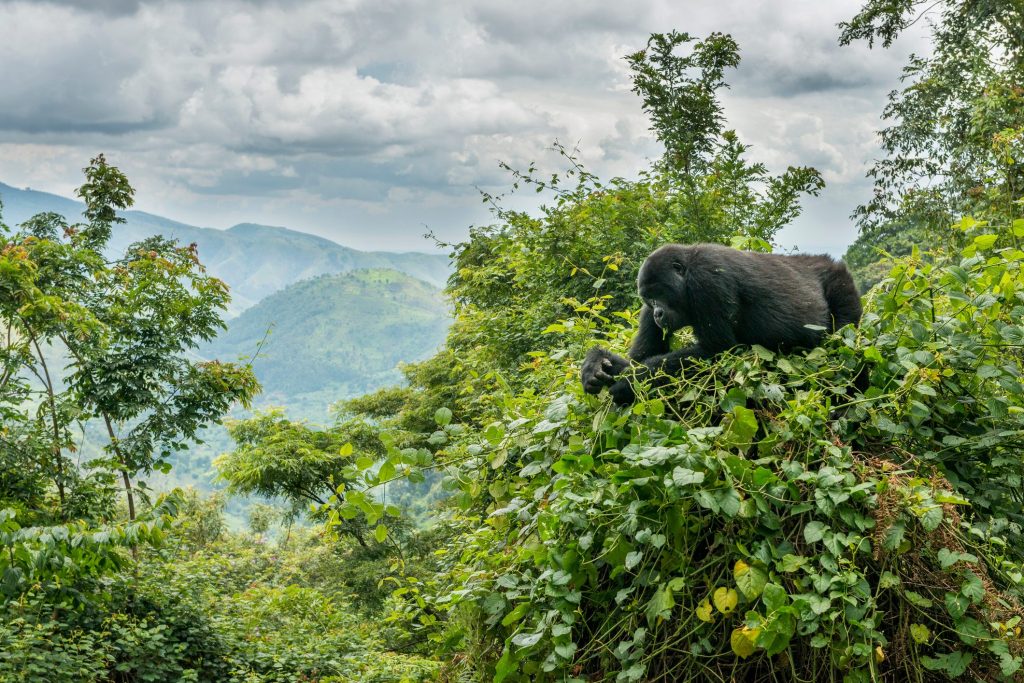
mountain gorillas habitat
They live in 2 isolated groups, one in the Bwindi forest and the other in the Virunga massif.
There are four National Parks in these three countries where Mountain Gorillas survive and can be trekked around the whole world.
Facts about Mountain Gorilla natural habitats are that they live in Uganda, Rwanda, and the Democratic Republic of Congo.
The only way of seeing these gentle giants is by undertaking A Uganda Gorilla trekking safari, A Gorilla trekking tour in Rwanda, or Congo Gorilla trekking safari.
In Uganda, they live in Bwindi Impenetrable National Park and Mgahinga Gorilla National Park. In Rwanda, they are found in Volcanoes National Park and in Virunga National Park in the Democratic Republic of Congo. Mgahinga, Virunga, and Volcanoes are all part of the great Virunga volcanoes.
What do Mountain Gorillas eat; – Diet
Diet of Mountain Gorillas
The Mountain Gorilla’s diet is mainly vegetables. They can eat all day long with the vegetation being mainly stemmed, leaves, fruits, bamboo shoots, pith, roots, moth, and grubs.
At times, termites, ants, and insects supplement their diet. They eat much more fibrous foods and consume up to 250 plant species. Mostly, gorillas rely on food availability rather than diet selection.
Another fact about the Mountain Gorilla diet is that since they consume a lot of vegetation, they rarely drink water.
What Makes Mountain Gorillas Unique
Unlike other Gorillas, Facts on Mountain Gorillas – live at elevations of up to 1,500 m – 4,000 m above sea level. At these heights, the temperatures can drop below freezing point, their thicker and longer fur keeps them safe here.
They are the only subspecies of the genus Gorilla that have no capability to survive in captivity. To see them, you have to visit them in their natural habitat.
Why are Mountain Gorillas Important
Gorillas, just like all other wild animals are so important. They play a great role in the environment since these large-scale grazers eat lots of vegetation. Without them, the natural balance in the food chain would be disrupted.
For the people in the countries where these giants live, their presence has created employment to thousands in the tourism industry. It has also led to improvement of the standards of living for those employed and as well surrounding communities that share from the proceeds.


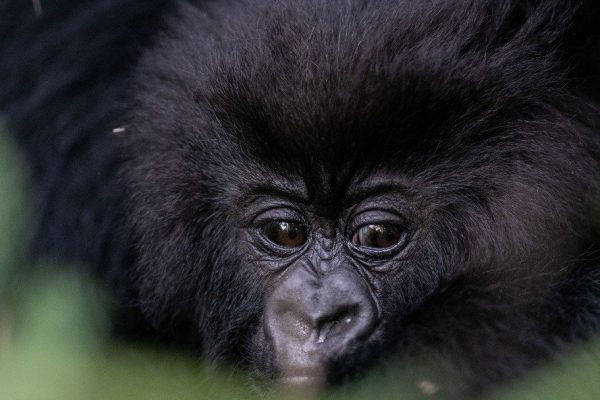
![Adult Male Mountain Gorilla Silverback [ Gorilla trekking tours in Rwanda] Adult Male Mountain Gorilla Silverback [ Gorilla trekking tours in Rwanda]](https://www.kabiraugandasafaris.com/wp-content/uploads/2020/01/Adult-Male-Mountain-Gorilla-Silverback-600x400.jpg)
